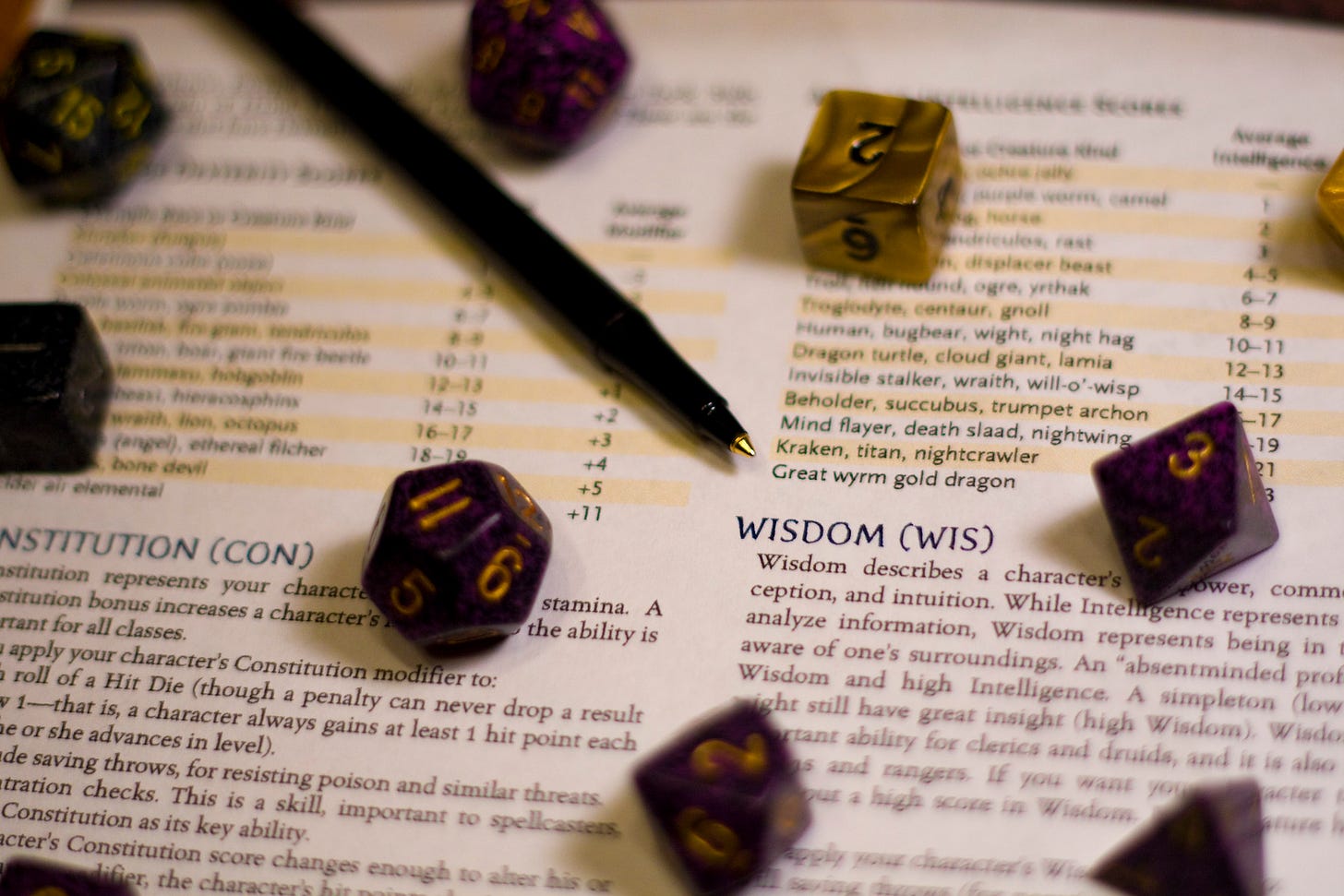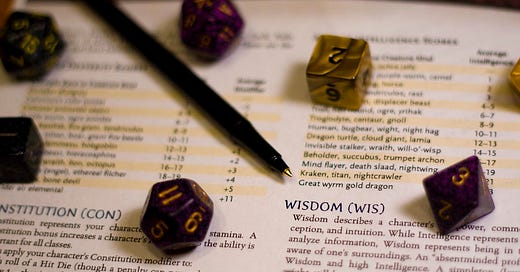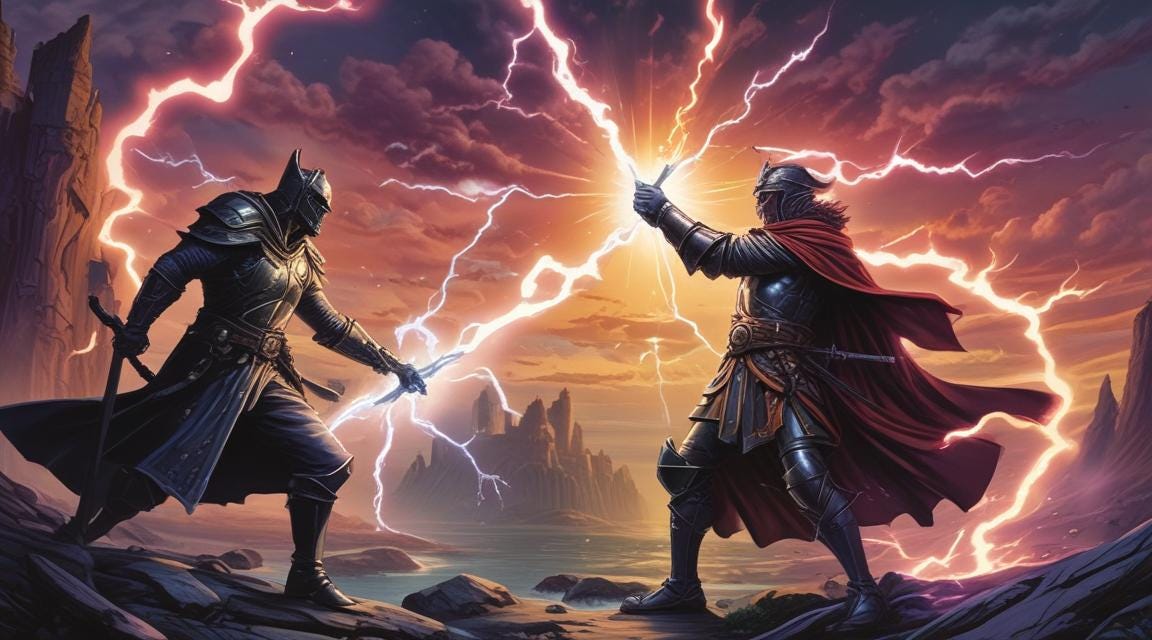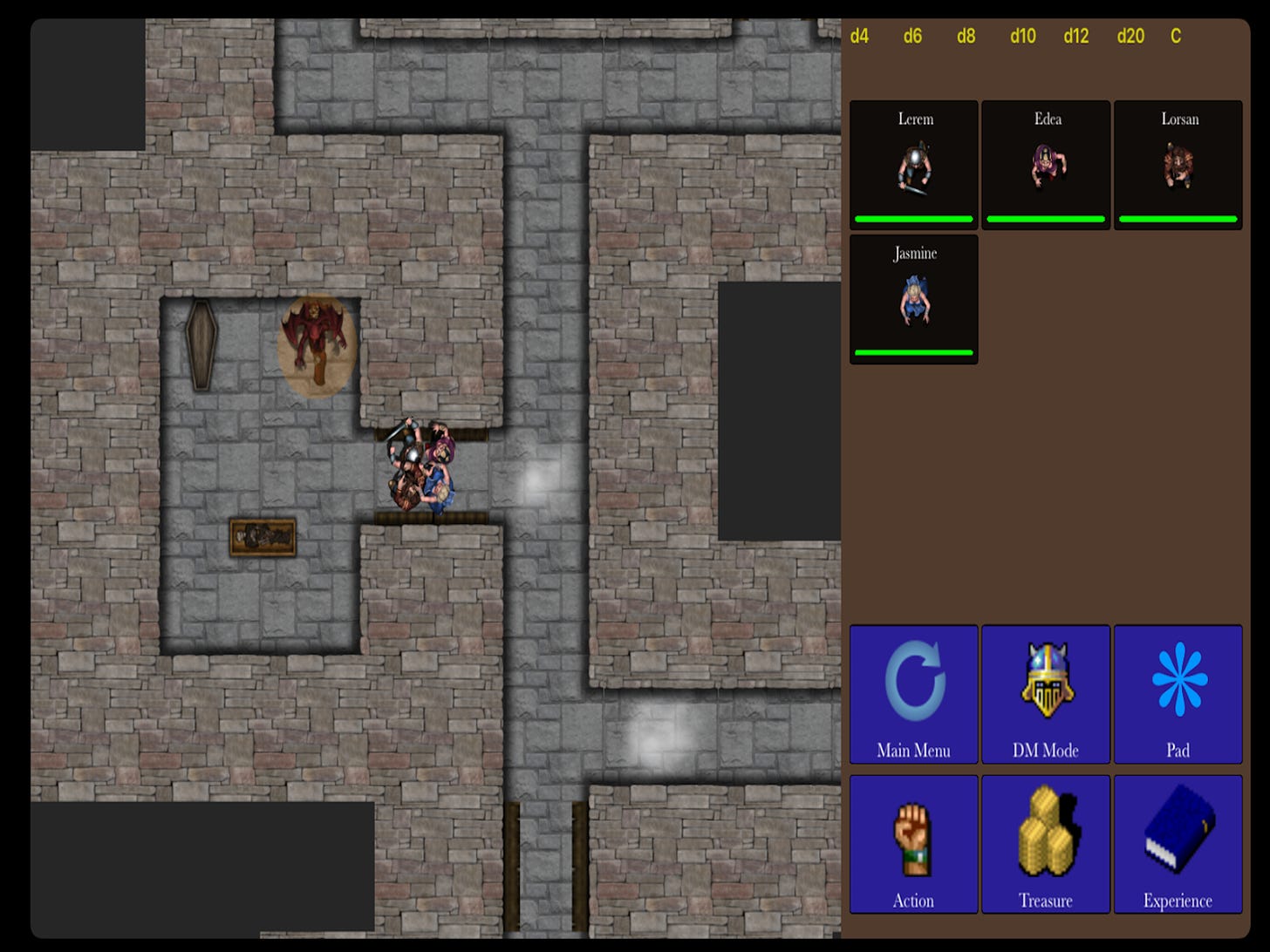How to Play D&D With Two People

Tabletop roleplaying games have never been more popular, but the rise of Dungeons and Dragons, Pathfinder, and other TTRPGs has also given way to the ugly sentiment of gatekeepers who believe they have the right to dictate the right and wrong way to play these games. But that is not the nature of RPGs. The beauty of tabletop roleplaying is that pen-and-paper games are dictated by how we want to play them, not how someone else (even the designers!) think we should. You can absolutely play D&D with two people. In fact, playing a tabletop RPG with two players can rock!
When I was in high school, me and my best friend loved playing "Advanced" Dungeons and Dragons (as it was called back in the 1st edition days), but we often found it difficult to find a group. The pre-Internet days of pen and paper meant we'd need to find people nearby and a place to meet, both of which could sometimes prove to be a challenge. But not letting this deter our fun, we continued playing with just the two of us. And as I look back on all the characters I played and the stories I took part in, those are some of my fondest memories.
There is no right or wrong way to play a tabletop roleplaying game.
The real question is How. There's no doubt the game design is centered around a dungeon master and multiple players. The challenge rating on monsters is based on four characters, which lends itself to the idea that 3-6 characters in a party tend to be ideal. But there's nothing stopping a pair of would-be adventurers from having a blast. In fact, you can even play D&D and similar games solo if you desire. Again, there's no right or wrong way to play. But for this article, we'll focus on playing in a group of two.
When Playing D&D With Two People, Who Will Be the DM?
The first question to ask is who is going to be in charge of the story and the rules. In a normal game, the dungeon or game master has a lot of work to do before the session even begins. If running an official campaign, this includes reading the book and familiarizing themselves with the different non-player characters, encounters, traps, etc. If doing a homebrew campaign, this can extend to drawing maps and coming up with plots and subplots.
But believe it or not, when playing your RPG with just a couple of people, there's a lot of flexibility in how to handle the role of game master. This is especially true if both players are familiar with the game rules.
Shared Responsibility. The ideal situation is to take turns being the game master. This can mean that one player runs the game one session, the other player runs it the next. Or the players can switch off running mini-campaigns, full campaigns, or even switch off going through official campaigns, although homebrew playing tends to lend itself well to playing in a group of two.
Splitting Up the Duties. Shared responsibility doesn't have to mean switching off telling the stories. One player can take the lead in shaping the campaign while the other runs combat and deals with the mechanics of the various tricks, traps, etc. The players can also take turns being the "Combat DM" during individual adventurers to ensure both players get to use their wits to outsmart the enemy.
The Primary DM. While I would suggest having some type of shared responsibility, even if one player simply runs the occasional combat sequence, having a primary dungeon master can allow for more complex campaigns. This certainly puts more of the burden on one set of shoulders, but can be a great way to get started when one player is very familiar with the game and the other is still just learning. When I used to play with my friend, we started out with this arrangement, but as he became more comfortable with the rules, he started taking the lead in more situations.
You Can Play D&D With Two Players. But How Many Characters?
This is another interesting question that oftentimes doesn't come up in a normal RPG setting. How many characters should each player run? A 4-character party is often thought of as the sweet spot, especially considering how challenge ratings are designed. If you play D&D with two people, this would mean each player controls two characters and would allow a balanced fighter/thief/cleric/mage party. (Or just 4 mages. Why not?)
But the cool part is you can really do whatever you want in terms of characters. Running through dungeons with just two can be quite enjoyable, and if you are sizing the dungeon based on just those two, it can make things run a lot quicker. You can even decide to run 3 or even 4 characters each, although that can get quite crazy. You can even roll up a roster of characters and then pick and choose just one or two of them to run each session.
If you are using official campaigns or designed modules/maps, you may have to tailor your party to the difficulty level, but if you are doing your own thing, you really have a lot of freedom in this regard.
And believe it or not, playing two characters can be loads of fun. You can play your characters off each other. A fun tip if running multiple characters is to give each of them some type of quirk or defect such as being scared of loud noises or enclosed places or having an aversion to the color blue. This can give them each a unique flavor.
How to DM and Play at the Same Time
There's definitely a juggling act that must go on when you are the game master and you have characters in the party at the same time. This is true for normal groups where the DM runs a character (or quasi-permanent NPC), and especially true when there's just two of you. This is also why splitting up some of the duties, even if it is just alternating who DMs the occasional fight, can be the best way to handle these situations.
As a general rule, the player who isn't the game master should be making the vast majority of decisions outside of combat and should take the lead during combat, although it is perfectly fine for the acting DM to play more of an active role during encounters.
This means the non-DM decides where to go on the map, especially in dungeons or similar adventurers. In a broader more global sense, the acting DM can play more of a role when it comes to generic overland travel. Even in normal situations, a DM may use NPCs or other actions to steer the ship so to speak, and if the DM has a plan for the players to find a cave when going over the mountains, it is okay to push the player into a "let's just hike over those mountains" decision.
Combat when playing D&D with two people can be handled in multiple ways. A simple way to split duties is to take turns being the primary DM from one encounter to the next, but another way to do it is to use dice and shared responsibility during combat. Basically, roll for each opponent to see which character they target and then have each player be the DM of those enemies going against the characters of the opposing player. Remember: it's your game, so use your judgment and bend these rules if needed. If all six goblins roll to go against the cleric, feel free to spread out the targets a little. You don't want the goblins accidentally stabbing each other in their glee of overwhelming the priest.
Random Generators Can Be the Key to Two-Player D&D
When my friend and I played, we used random generators all the time. We'd often explore dungeons that were created by rolling the random tables in the back of the Dungeon Master's Guide. I even built an app called "town" on my Commodore 64 that characters would use to see what happened to them that week. (The warrior's guild might send them to a battle, the thieves guild might say they needed to break into a warehouse, the adventurer's guild might alert them to a nearby dungeon, etc.).
I designed my Endless RPG app to create random dungeons with the players in mind, so the dungeon is covered in a fog of war allowing you to explore. (You can download it on iPhone/iPad, Android or Windows.)
And there are a ton of good generators out there from websites like Donjon, DunGen, Gozzy's and a dungeon generator at Kassoon that gives room descriptions.
Tip: Use a variety of different generators!There are good and bad points with almost every generator. The easiest way to add variety is to use a lot of different generators so you get a good mixture. And I highly recommend both (1) using the back of the DM's guide to roll up dungeons as you go -- which is quite fun -- and (2) fully exploring all of the generators on Donjon and similar websites. You can use generators for a lot of different things like coming up with basic plot ideas, enemies, etc.
Create Your Own Generators!
The best part of playing with just two people is the amount of creativity and flexibility you can have with the game. We would create our own tables for things. In addition to creating the 'town' app, we would list out some things that could happen if we took a specific action or simply events that might pop up in our current session.
For example, let's say we decided to explore a forest:
We discover a bandit hideout with prisoners from a local village.
We come across a cave that descends to the lair of an adult green dragon.
We meet some local wood elves and are taken to their village for a meal and night's rest.
When we finally make camp for the night, we are attacked by a large group of orcs commanded by a large and unusually intelligent bugbear.
We come across a ruined tower with a randomly generated dungeon beneath it.
Nothing happens. We don't discover anything unusual.
The lists would generally be 6 or 8 items long to make for an easy dice roll, although sometimes we would slowly add to a list taking it from 6 items to 8 to 10 to 12 and finally to 20. We could then reuse these lists when we needed to spice things up.
Playing D&D With Two Players Is All About Having Fun
I began the discussion by pointing out how gatekeepers are the opposite of what tabletop roleplaying is all about. Remember, there is really only one rule: have fun. Every other rule can be bent or broken so long as it serves that purpose. Feel free to experiment and adapt until you come up with a balance of play that maximizes the fun factor for both players.
If rolling random dungeons isn't your thing, go with official campaigns. Also, don't forget there is a thriving community of creators selling their stuff on DM's Guild and other websites. The one-off module is great for playing in a duo because it lends itself to alternating who takes the lead whereas a huge campaign can take dozens of sessions to actually complete, which doesn't quite lend itself to multiple DMs.
Even if one player takes on the permanent DM role, there are a ton of ways to play the game. Both players can roll up characters, again, with the DM allowing the other player to take the lead on decision-making. Or the DM can stick with a traditional dungeon master roll with the other player donning the role of one or more characters.
Download Endless RPG for Random Maps:
You can download Endless RPG for iPhone/iPad from the App Store.
Endless RPG is also available on Android devices from the Google Play store.
Header Image by jprime84 / Flickr





